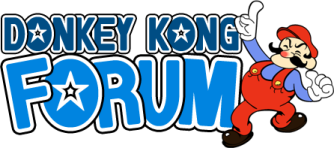After taking the time to read the whole thing, please allow me to recognize the effort that went into creating this manual. As a practicing writer, I know that it is no small accomplishment to create, organize, and edit such a large amount of content.
I hope that the recommended edits I listed will be useful to you. I'd also like to offer a few notes of constructive criticism:
As it stands, it is still relatively unpolished. I know it's still a work in progress but I'd be upset if I paid $60 for it in this state. Do what you need to increase its quality, and its value.
I'd like to see a better breakdown of "sections" of the manual, because right now it feels like it's just "INTRO" and "STRATEGY." The Strategy section is never-ending and although there are headings introducing some paragraphs, it is a LOT of text.
Although I can appreciate what you're trying to accomplish by not leaving out any details, many parts in the Strategy section are challenging to follow even as a regular DK player. If the intended audience is beginners, I fear they will not follow at all. To offer an example, many of the tip sections read like "You will encounter two possibilities. The first is this, in which case you do this. The second is this, in which case you do this. But on rare occasions you may see this, in which case you'll want to do this, except in the cases where in that rare case it played out like this instead so you need to do this instead. Oh but if you're on Levels 3 or 4..." I think you get what I mean.
There are so few pictures it's almost shameful. My understanding is that you're going to work on including more pictures. In my opinion, a picture with a short description will say so much more than walls of text can. For example, the discussion on Star Pattern versus Weave pattern could be almost completely eliminated with just two images. Writing out the precise steps is less important than simply showing the difference between the popular patterns using images.
Although I understand that this is difficult to do with multiple writers contributing to the finished manual, I must stress the importance of consistent lingo. Sometimes you say "smashing" or sometimes you say "hammering." Sometimes you say "platform" and sometimes you say "girder." When you're talking about removing the rivets you sometimes say "remove," sometimes say "unplug," and sometimes say "snag." Pick single terms for each action or obstacle and stick with it.
On the topic of consistency, some of your sections are introduced with capitalization ("Smashing With the Hammer"), others are not ("Passing the first fireball"). Furthermore, sometimes the document has "3rd" or "4th" terminology written as regular text, and sometimes it's in superscript (where the rd in 3rd is smaller than the 3 and lifted).
This is just the writer in me talking, but I also want to stress the importance of brevity. There are so many excess words that could be removed throughout the text. Some examples:
"try to at least get the left side of the broken ladder as quickly and as safely as you can" does not need "at least" at all.
"Another piece of knowledge that is useful is understanding is" could be shortened to "Another helpful tip is"
"it has to be remembered that Jumpman" could be shortened to "Remember that Jumpman"
Finally, there are constant references to "the player" where you're moving back and forth between saying "One" and "you." From a writing standpoint, this is technically wrong.
"If one is lucky, you actually might" should be either "If you're lucky, you actually might" or "If one is lucky, one actually might."
In my opinion, it is a "friendlier," and more personal experience as a reader to ALWAYS use "you," whereas "one" sounds very rigid and impersonal. On that note, the tone of the manual bounces from using really sophisticated, almost mechanical words like "normative" to slang like "gonna" and "scoot." I'd edit to shoot for a more middle-of-the-road tone where reading strategy will sound as though a friend of mine was explaining it to me in plain language.
I don't want to come off as too critical, because I do appreciate and respect the work that went into the manual. It is a nice write-up, that needs some editing. I just want to suggest some recommendations for making it great, instead of good.
Cheers






